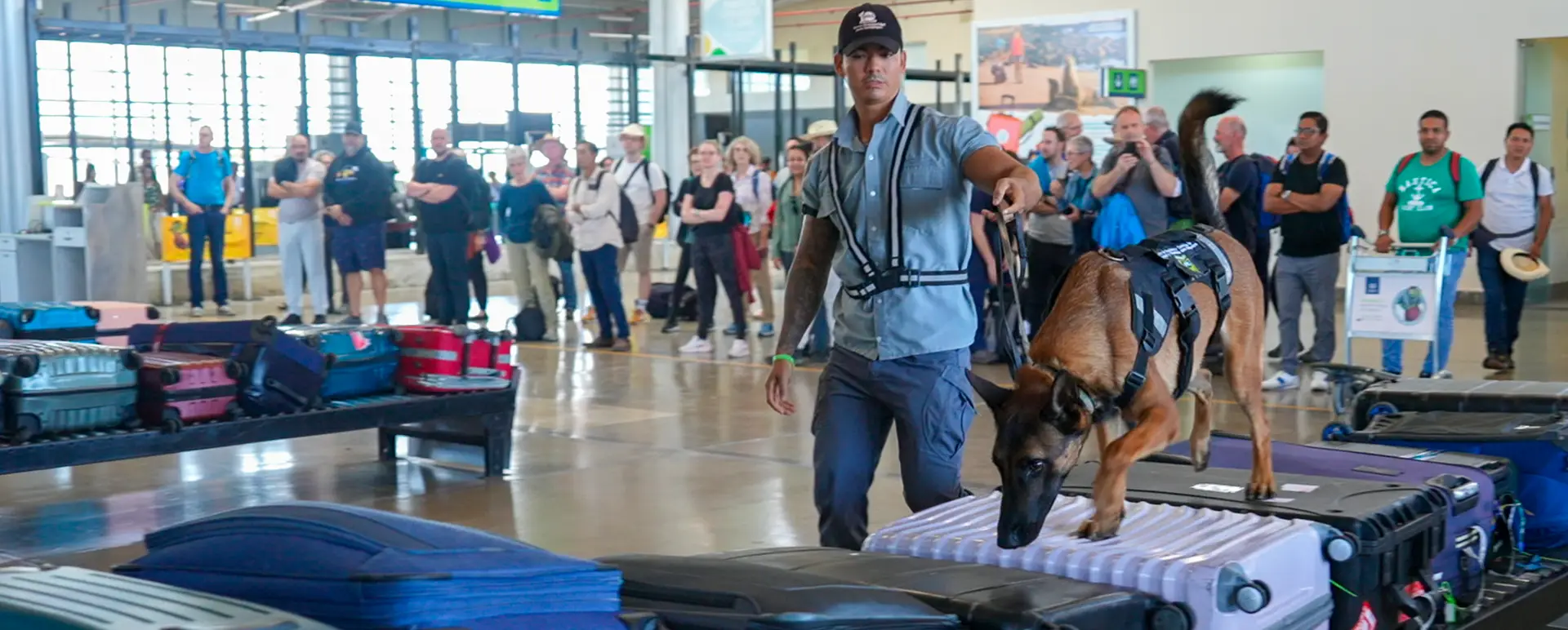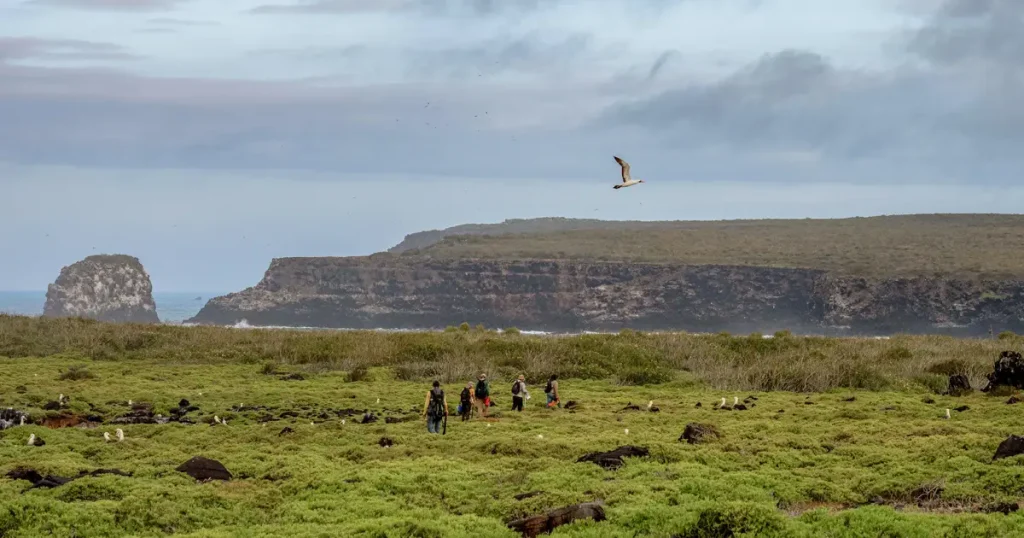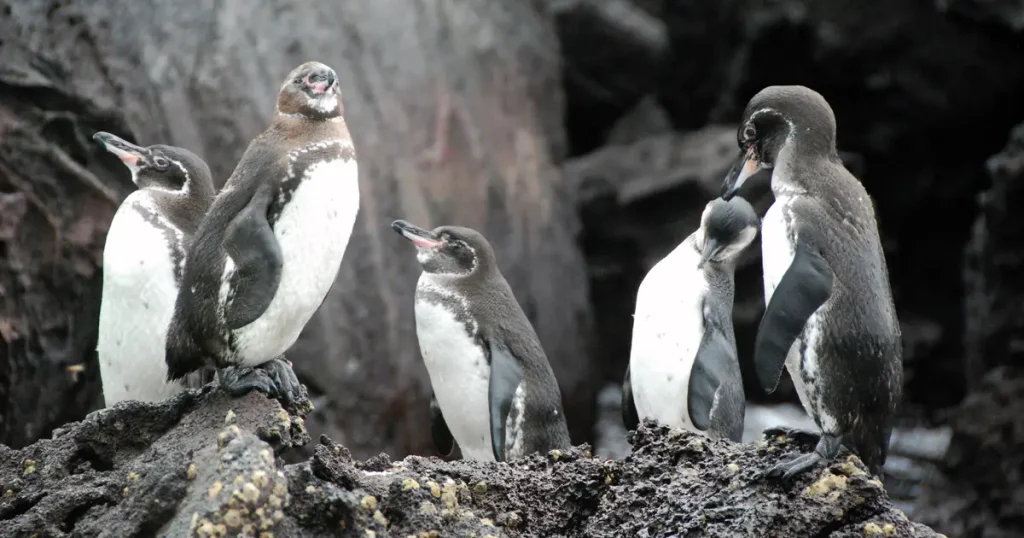A Nose for Protection: The Canine Brigade Defending the Galápagos Islands

In the Galápagos Islands, a team of specially trained dogs is working with their human partners to inspect luggage, cargo, and shipments at key entry points. Their mission: to detect invisible threats that could put one of the world’s most fragile ecosystems at risk. Led by the Biosecurity and Quarantine Regulation and Control Agency for Galápagos (ABG), this canine brigade has grown stronger over the years with the support of strategic allies. In 2025, it expanded for the first time to San Cristóbal Island, adding a new layer of defense for the archipelago.
Galápagos knows too well the damage invasive species can cause. Many arrived with the first settlers, who brought crops, livestock, and tools for survival. While not introduced with harmful intent, some species spiraled out of control. Since then, years of effort and millions of dollars have been invested in containment and eradication. Today, awareness is higher, tools are better, and the protocols are more robust. Yet the threat remains. Some dangers arrive unnoticed—hidden in a box, clinging to fruit, or buried deep within cargo—and once they’ve entered the islands, removing them can be costly, nearly impossible, or lead to unintended consequences.
That’s why experts agree on one principle: prevention is our best defense. And in this frontline work, the most effective technology isn’t always a machine—but a trained dog’s nose.
Active Protection from the Point of Entry
Living in Galápagos means living with unique risks. Daily life depends on a steady flow of products arriving by sea and air, including food, medicine, building materials, and agricultural supplies. But every container, every suitcase, can carry stowaways—exotic seeds, insects, rodents, or pathogens that threaten crops, native wildlife, and delicate ecological processes.
In towns like Puerto Baquerizo Moreno—the provincial capital and home to about 8,000 residents—these risks are very real. That’s why the addition of a new canine inspection team in 2025 is more than a logistical upgrade: it’s a vital barrier to keep the islands safe.
A Long-Term Commitment to Prevention
For over a decade, Galápagos Conservancy has partnered with the ABG to strengthen the islands’ first line of defense: stopping invasive species before they enter. In 2014, together with Island Conservation and the Leona M. and Harry B. Helmsley Charitable Trust, we helped launch the first detection dog unit in Santa Cruz. Two dogs, Darwin and Neville—trained by Dogs for Conservation—were deployed with a unique and urgent mission: to detect biological threats such as the African giant snail, one of the world’s most harmful invasive species.
The effort was so successful it became a model. In 2017, new canine teams joined the program, and in 2022 we renewed our commitment with a new agreement that supported the addition of two more dogs—Kratos and Bruss—and the training of five official handlers. That joint work strengthened ABG’s biosecurity system and laid the groundwork for its expansion.
In 2025, the program reached a new milestone by expanding to San Cristóbal Island. A newly trained dog-handler team began operations at the island’s airport and ports, following 120 hours of specialized training. Their mission: detect agricultural products, seeds, meat, and other materials that could pose a biosecurity risk. With tools like X-ray scanners, sanitation arcs, and detection dogs working together, San Cristóbal is now better protected than ever.

“This expansion to San Cristóbal reflects the shared commitment we have with ABG: to stop new threats before they reach Galápagos. We’re proud to have supported this mission from the beginning, and we will continue doing so with unwavering dedication.” — Hugo Mogollón, President & CEO, Galápagos Conservancy
Natural Technology: When a Nose Outperforms a Machine
A trained dog can detect a piece of fruit in a sealed suitcase or a hidden pest in a cargo crate. Their sense of smell far exceeds that of any machine—and they save time and resources while significantly reducing risk. These dogs are living technology in the service of conservation.

A Living Alliance: An Ongoing Effort
Expanding the detection dog program to other islands is a victory—but it’s not the end. Protecting Galápagos requires education, monitoring, restoration, and forward-looking science. It’s a collective, long-term effort that brings together community, science, and shared responsibility.
“The ABG plays a critical role in defending our island ecosystems. The support of Galápagos Conservancy has been essential in strengthening our work. It’s not just logistics—it’s a strategic alliance that empowers us to protect Galápagos with greater impact.” — Jean Pierre Cadena, Executive Director, ABG

Your Help Can Make a Difference
At Galápagos Conservancy, we’ll continue to strengthen this partnership, support ABG’s human and canine teams, and champion solutions that unite science and community action. Because protecting Galápagos begins at its entry points—but its impact reaches every corner of these unique islands.

Now more than ever, we must work together.
Support biosecurity. Be part of Galápagos’ future.
Share:





